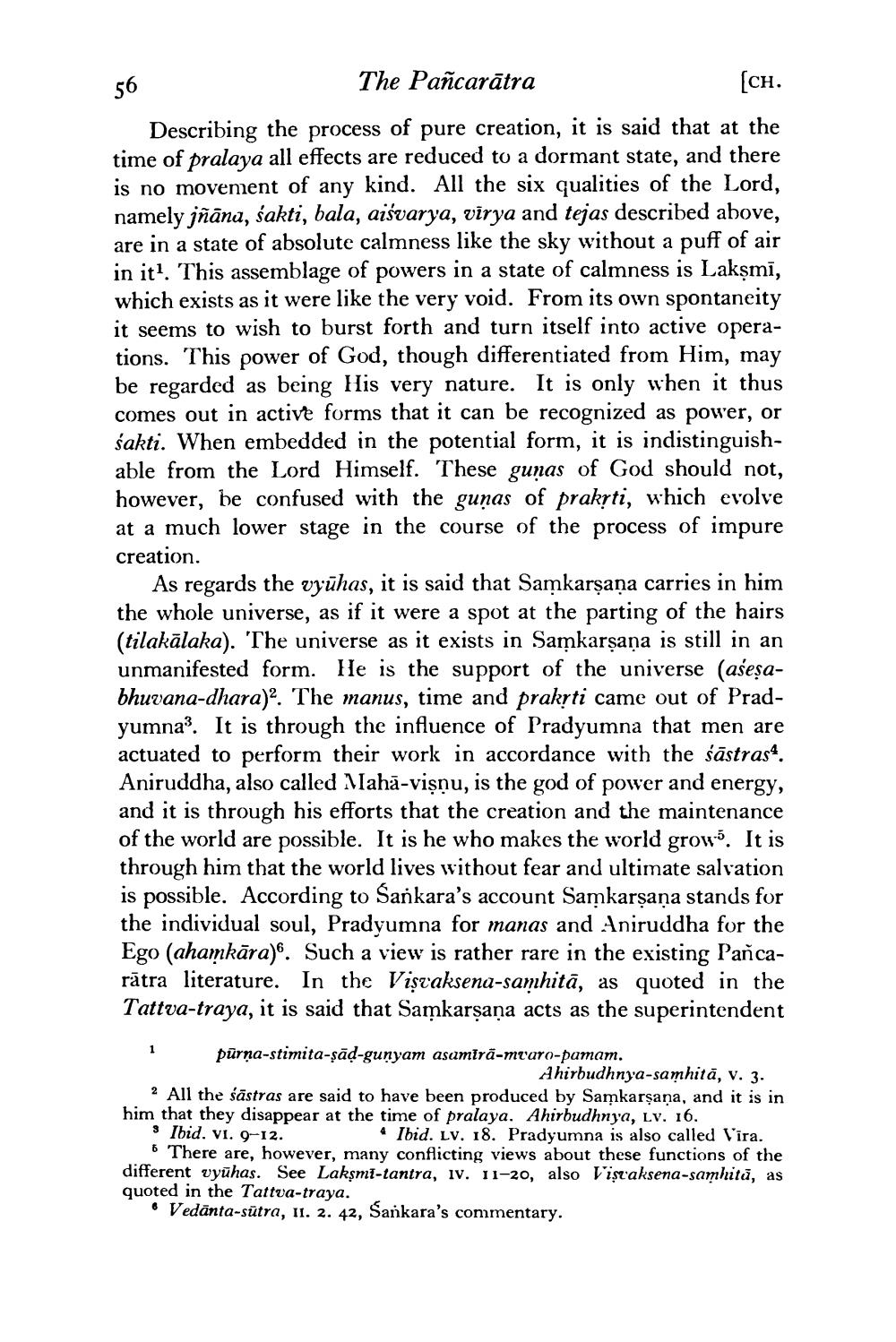________________
56
The Pañcarātra
[ch. Describing the process of pure creation, it is said that at the time of pralaya all effects are reduced to a dormant state, and there is no movement of any kind. All the six qualities of the Lord, namely jñāna, śakti, bala, aišvarya, virya and tejas described above, are in a state of absolute calmness like the sky without a puff of air in it? This assemblage of powers in a state of calmness is Lakşmī, which exists as it were like the very void. From its own spontaneity it seems to wish to burst forth and turn itself into active operations. This power of God, though differentiated from Him, may be regarded as being His very nature. It is only when it thus comes out in active forms that it can be recognized as power, or śakti. When embedded in the potential form, it is indistinguishable from the Lord Himself. These guņas of God should not, however, he confused with the guņas of prakrti, which evolve at a much lower stage in the course of the process of impure creation.
As regards the vyūhas, it is said that Samkarşaņa carries in him the whole universe, as if it were a spot at the parting of the hairs (tilakālaka). The universe as it exists in Samkarşaņa is still in an unmanifested form. He is the support of the universe (ašeșabhuvana-dhara)2. The manus, time and prakrti came out of Pradyumna?. It is through the influence of Pradyumna that men are actuated to perform their work in accordance with the śāstras“. Aniruddha, also called Mahā-vişnu, is the god of power and energy, and it is through his efforts that the creation and the maintenance of the world are possible. It is he who makes the world grow. It is through him that the world lives without fear and ultimate salvation is possible. According to Sankara's account Samkarşana stands for the individual soul, Pradyumna for manas and Aniruddha for the Ego (ahamkāra). Such a view is rather rare in the existing Pancarātra literature. In the Visvaksena-samhitā, as quoted in the Tattva-traya, it is said that Samkarşaņa acts as the superintendent
pūrņa-stimita-șād-gunyam asamira-muaro-pamam.
Ahirbudhnya-samhitā, v. 3. 2 All the śāstras are said to have been produced by Samkarşaņa, and it is in him that they disappear at the time of pralaya. Ahirbudhnya, Lv. 16. 3 Ibid. vi. 9-12.
• Ibid. Lv. 18. Pradyumna is also called Vira. 6 There are, however, many conflicting views about these functions of the different vyūhas. See Lakşmi-tantra, IV. 11-20, also l'iştaksena-samhità, as quoted in the Tattua-traya.
• Vedānta-sutra, 11. 2. 42, Sankara's commentary.




